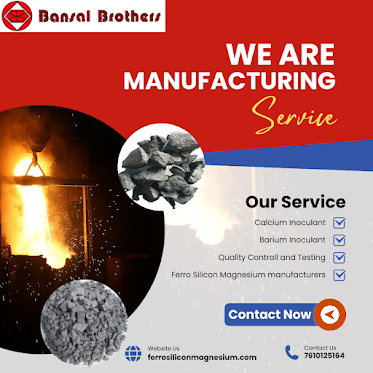Enhancing Strength and Ductility: Exploring S.G. Iron Treatment
In the realm of metallurgy, the quest for achieving the perfect balance between strength and ductility has been ongoing for centuries. One such breakthrough came with the development of Spheroidal Graphite Iron (S.G. Iron), also known as Ductile Iron. This remarkable material combines the strength of traditional gray iron with the ductility of steel, making it highly suitable for a wide range of applications across industries. In this article, we delve into the world of S.G. Iron treatment, its benefits, and the intriguing prospect of using high sulfur metal in its production.
Understanding S.G. Iron
S.G. Iron is a type of cast iron that boasts a unique microstructure containing graphite nodules instead of the usual graphite flakes found in gray iron. This microstructure imparts remarkable mechanical properties to the material, including improved strength, toughness, and ductility. The nodular graphite structure reduces the stress concentrations that are typically present in gray iron, resulting in enhanced fracture resistance and better overall performance.
Ductile Iron Treatment Process
The production of S.G. Iron involves a meticulous treatment process to ensure the formation of spherical graphite nodules within the iron matrix. One of the key steps in this process is the introduction of magnesium into the molten iron. Magnesium has the remarkable ability to react with the carbon present, encouraging the formation of graphite nodules instead of flakes. This nodular structure is responsible for the unique combination of mechanical properties that set S.G. Iron apart from other materials.
Benefits of S.G. Iron
Strength and Ductility: The most striking advantage of S.G. Iron is its remarkable balance between strength and ductility. Traditional cast iron tends to be brittle due to the formation of graphite flakes, while steel can be too ductile for certain applications. S.G. Iron bridges this gap, making it ideal for components that require both resilience and durability.
Impact Resistance: The nodular graphite structure in S.G. Iron helps absorb and dissipate energy upon impact. This property makes it an excellent choice for parts that are subject to dynamic loading, such as automotive components and machinery parts.
Cost-Effectiveness: S.G. Iron's manufacturing process is relatively less expensive than producing steel, while still offering comparable mechanical properties. This makes it an attractive choice for applications that demand high performance without breaking the bank.
Machinability: S.G. Iron exhibits improved machinability compared to steel, which can often be challenging to work with due to its hardness. This makes S.G. Iron parts easier to machine and shape according to specific requirements.
S G iron treatment with high sulphur metal
Treating high-sulfur metal with SG iron demands precise processes to uphold quality. Managing sulfur content is vital to prevent unfavorable effects on properties. This treatment preserves SG iron's strength, making high-sulfur metal suitable for various industrial applications.
Conclusion
S G Iron treatment represents a pivotal advancement in metallurgy, providing a material that successfully merges the best attributes of cast iron and steel. Its unique microstructure, coupled with its remarkable mechanical properties, has opened doors for innovative solutions across industries. Whether considering its balance of strength and ductility, impact resistance, or cost-effectiveness, S.G. Iron stands as a testament to human ingenuity in the field of materials science. With ongoing research into techniques like using high sulfur metal, the future of S.G. Iron treatment holds even more promise, pushing the boundaries of what this exceptional material can achieve.
To learn more about this revolutionary product, visit www.ferrosiliconmagnesium.com today!



Comments
Post a Comment